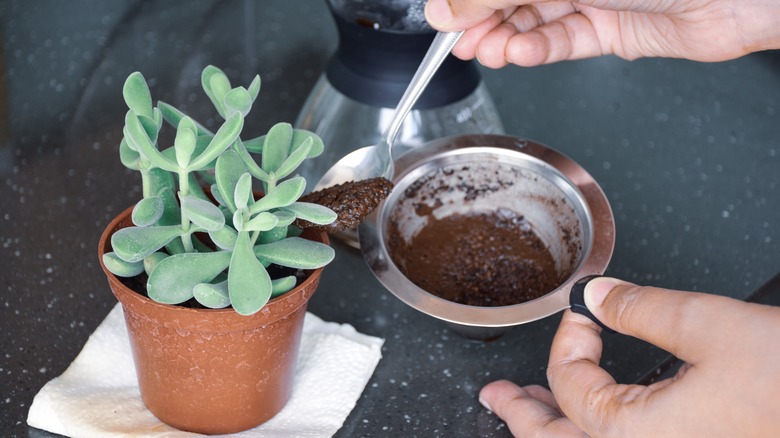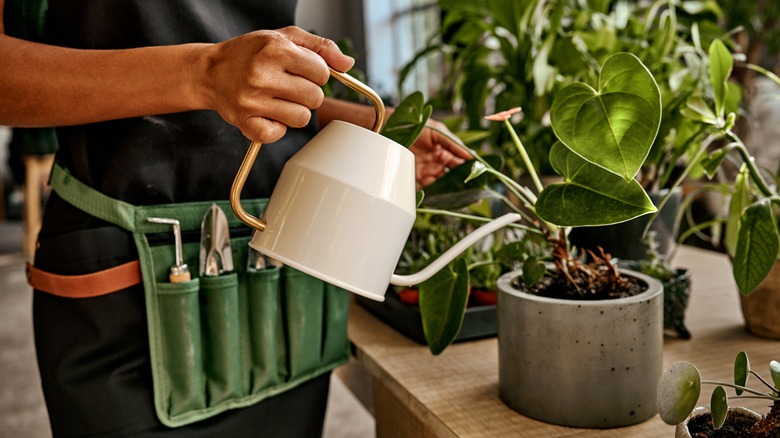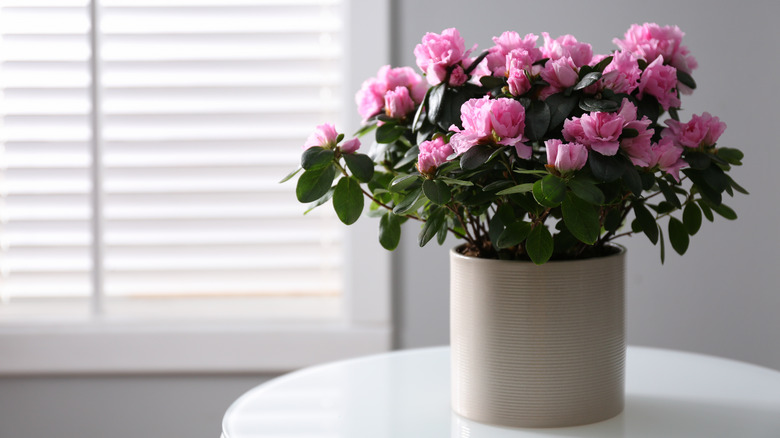The Drawback Of Adding Used Coffee Grounds To Indoor Plants (& How To Avoid It)
The next time you pour yourself your morning cup of joe, think twice about sharing the wet remains with your indoor plants. According to Drive Research, nearly two in three Americans drink homemade coffee every day, leaving coffee grounds in ample supply for houseplants. Boosting the health of your plants with this pantry staple is one of many unexpected uses for leftover coffee grounds. However, one major drawback to using coffee grounds on indoor plants is that the wet coffee grounds can mold. When left to linger on the soil's surface, the moist substance can rot, creating the perfect conditions for a breeding ground of fungus gnats to form around your beloved houseplants.
Because of this, it's best to avoid directly applying the coffee grounds when they are still damp. Instead, make a coffee water fertilizer to add to your soil. Applying coffee grounds in this manner ensures they won't mold and your plants can still benefit from the nutrients they provide. Coffee grounds offer plants small amounts of beneficial nutrients like nitrogen, potassium, phosphorus, and magnesium -– just to name a few.
The best way to use coffee grounds on houseplants
Applying coffee grounds to your indoor plants as a liquid fertilizer, rather than plopping them down on the soil is ideal. Otherwise, the wet spent coffee grounds lingering separately on the soil's surface can impede air circulation that further promotes a damp environment for mold and gnats to reside. The needle-point-sized flies are an issue not only because they are a general annoyance, but because when they're done feeding on the moldy coffee grounds, they will turn to devouring your plant's roots. Damaged roots result in poor plant growth, discolored leaves, and leaf drop.
In a few simple steps, you can repurpose your used coffee grounds as fertilizer for your indoor plants. Simply mix the used grounds with water at a ratio of 2 cups to 5 gallons of water. Stir the coffee solution to evenly distribute the grounds throughout the liquid and let it steep overnight. The next morning, sift the liquid through a mesh strainer or cheesecloth to separate the remaining grounds from the coffee fertilizer. Finally, you can water your plants with the liquid. Alternatively, you can apply the coffee liquid fertilizer to the leaves as a foliar spray.
What plants to add coffee fertilizer to and which ones to avoid
Similar to how some people respond poorly to coffee, certain houseplants will enjoy quenching their thirst with coffee water fertilizer and others won't. Some argue that the pH of coffee grounds is neutral after they're used, while others claim the spent coffee grounds are still acidic and can alter the pH levels of your plant's soil. Because of the mixed opinions, it may be smart to take extra precautions before applying the coffee fertilizer to your houseplants.
Acid-loving plants are among those that may benefit most from the coffee solution. Some of these may include smaller varieties of azaleas, rhododendrons, camellias, and roses. You can give these 10 indoor houseplants a dose of coffee fertilizer and watch them thrive, as well. Meanwhile, plants that prefer alkaline soil conditions, like lavender and lilacs, may be better off without the coffee supplementation.


